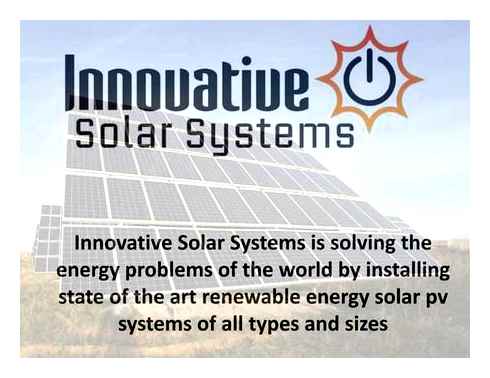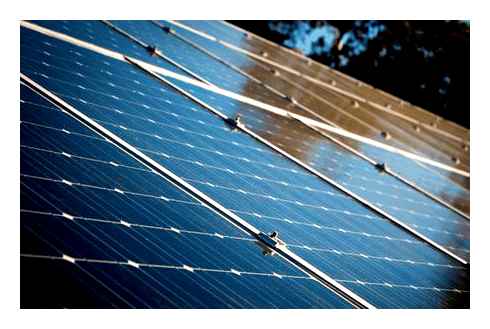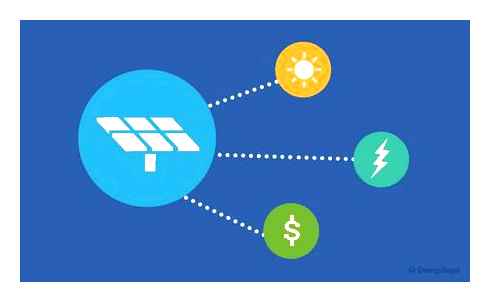Ground-Mount Solar Power Guide
When it comes to installing solar power, most homeowners think of roof-mounted solar panels. However, there’s another way to power your home with clean energy: Ground-mount solar panels. With this option, your solar power system can be placed near your home, anywhere from a few inches to a few feet off the ground, rather than on your roof.
How do you determine if a ground-mount solar array is the right renewable energy option for you? This article examines the pros and cons of ground-mounted solar panel systems, including factors such as space, price, and electricity requirements.
What Is a Ground-Mount Solar Panel System?
A ground-mount solar power system is a method of generating electricity from sunlight using free-standing solar panels that are installed near ground level, either on a metal frame or attached to a pole. These ground-mounted solar installations differ from rooftop panels in a few ways:
In terms of ground-mount solar installation, there are two main options:
- Standard Ground-Mount Solar Power. A metal frame or racking system is attached to the ground, and holds your panels at a specific angle.
- Pole-Mount Solar Power. Solar panels are attached to a metal frame, and that frame is then attached to the top of a pole mount, elevating the panels higher off the ground and allowing for additional customization. With pole-mounted solar, you can add a tracking system (either single-axis or dual-axis) that rotates throughout the day to maximize exposure to sunlight.
Ground–mount solar panels typically require more empty space around them than rooftop panels, as they have to contend with shading from trees, buildings, and other tall objects. This is why you usually see them on farms, ranches, and other properties with a lot of flat, open land, but rarely see them in traditional urban and suburban residential areas.
Because they aren’t mounted to a building, ground-mounted solar panels have more options for alignment to optimize the amount of sunlight they can receive, allowing them to generate more electricity than a fixed, roof-mounted option. That’s why you’re more likely to see these panels installed as utility-scale solar power systems in areas with higher peak sun hours.
Requirements for a Ground-Mount Solar Power System
When researching whether or not you can install a ground-mount solar power system on your property, there are three primary factors to consider.
Physical Space
When installing a ground-mounted solar power system, you will need sufficient space to install the hardware, including the panels themselves, and trenching for the wiring. The panels must get plenty of sunlight, so most experts recommend at least 50 feet of open space between the solar panels and any adjacent structures.
In many areas, your city or town may have setback requirements that control how close you can build to the edge of your property line. This means that you need to account for your proximity to your neighbors, especially if they have buildings, foliage, or anything else that could block the sunlight.
Soil Type
Your solar power system needs a deep, strong foundation to avoid settling and alignment issues, remain secure during inclement weather, and maintain distance from groundwater.

We recommend having a geologist or similar expert test your soil. A trained professional can ensure the soil can support the weight of a ground-mounted solar panel system and its base, and they will confirm the area doesn’t have large rocks that can cause issues with drilling the foundation for the mounts.
Financing Options
Ground–mount solar panels can have a higher upfront cost than rooftop solar panels, making them a less cost-effective option. Many homeowners opt to finance the investment by securing a solar loan through their bank or other lenders, but some of those options may be specific to roof-mounted solar. To get detailed information about your options for solar financing, you should talk to an experienced solar company in your area or your preferred banking institution.
Key Takeaways
Here are the top three things that you need to know about ground-mounted solar panels and energy production:

While rooftop solar arrays are the most common choice for homeowners, there are many reasons to consider a ground-mounted solar panel system.
Generally, ground mount solar panels cost a bit more than rooftop solar on a per-watt basis because of additional labor and permitting that may be required for the installation. That being said, if your property isn’t ideal for rooftop solar, installing a ground-mounted system can actually save you more money in the long run.

Rooftop solar arrays are restricted by the characteristics of the roof on which they are installed. If your roof isn’t at the right angle, doesn’t face south, or has obstructions like chimneys or skylights, then your solar array will be less productive. On the other hand, ground-mounted solar panels can be located wherever the conditions are best.
In addition, if your home uses a lot of electricity, your roof might not be big enough for a solar energy system that meets your electricity needs. In contrast, ground-mounted solar systems can be sized to match your electricity consumption without the space restrictions of a rooftop system.
Not all ground-mounted solar panel systems are created equal
There are two basic types of ground-mounted solar panel systems:
Standard ground-mounts use metal framing driven into the ground to hold your solar panels up at a fixed angle. Some standard ground-mounted solar panel systems can be manually adjusted a few times a year to account for seasonal shifts of the sun.

Pole-mounted solar systems support multiple solar panels on a single pole and elevate panels higher off the ground than a standard ground mount. Pole-mounted solar often incorporates tracking systems, which automatically tilt the solar panels to capture the optimal amount of sunshine.
Tracking systems can increase the production of your solar panels by 25 percent or more. If you decide to add a tracking system to your ground-mounted solar array, you have the option of either a single-axis or a dual-axis system. Single-axis tracking systems move your solar panels over the course of the day to follow the sun as it moves through the sky. Dual-axis tracking systems can also adjust based on seasonal variations in the sun’s position.
Ground-mounted solar panel systems offer benefits for all homeowners
Even if you are a good candidate for a rooftop solar energy system, there are many benefits to choosing a ground-mounted solar panel system.
First, ground-mounted solar panel systems are very easy to place, because they can be located on open land. They don’t require drilling into your roof, and the bracings used in standard ground-mount systems are lightweight and easy to remove. (If you opt for a pole-mount, they will usually be installed more securely.)
Second, a ground-mount solar panel system can be more productive per panel than a rooftop solar array. Because they’re not dependent on your roof, ground-mounted solar panels are set at the perfect angle to optimize energy production. This means you can generate more electricity than a comparably-sized rooftop system, and save more money in the long run.
Finally, ground-mounted solar panels are very easy to access for cleaning and maintenance. If you live in an area that receives a lot of snow in the winter, being able to easily sweep the snow off of your solar panels is a major convenience.
Most installers offer a ground-mount system option, and the cost of standard ground-mounted solar is comparable with a rooftop solar energy system installation. If you decide to include a tracking system in your installation, you will pay an additional upfront cost, but the resulting increase in electricity production can make tracking systems cost-effective for many homeowners.
SunRack Concrete Based Ground Mounting
Using SunRack not only help you determine the best racking solution for solar power project,but also ensure you win the highest investment return and the most efficient of Enjoying Sunshine.
Lower cost, Incomparable value ;
Faster installation, Flexible attachment ;
Perfect Service, Complete technical support ;
4.10 years limited warranty. 20 years design life.
SFS-GM-01A SunRack Concrete Based Ground Mounting
SunRack concrete base ground mounts is a highly versatile ground mounted solution that can be widely applied in commercial and utility installations. With patented components, sunRack Solar ground mounts saves installer considerable amount of time and presents you with great marketing edge over your competitors.
Sunforson Technology fixed ground pv stents adopt the double column structure, with a simple and dignified appearance, exquisite and stable structure, on-site installation without welding can be achieved, and with high reliability; to meet the structural carrying capacity features combined with practical, optimize the use of materials. Part of the battery plate connection with the use of rail mounting, suitable for all kinds of solar panels, and convenience for installation; greatly increased the efficiency of field construction, and save cost.
Installation Site:Open ground
Single System Weight:20~25 kg
Support Rail:Extruded aluminum
Module Orientation: Landscape or portrait
Code Compliance:AS/NZS 1170;
Material: Aluminum, stainless steel
Warranty: 10 years on material
Overview of system components
Easy Installation: The innovative Sunforson solar rail and G-Screw modules have greatly simplified the installation of PV modules.The System can be installed with a single Hexagon Key and standard tool kit.The G-Screw module and unique rail extension method allow greatly reduced installation times.
Great Flexbilitity: With the Sunforson ground mounting,framed or frameless photovoltaic modules can be easily mounted on ground.Designed as a unversal racking system,framed modules from all the popular manufacturers can be used.
High Accuracy: Without the need for onsite cutting,the use of our unique rail extending allows the system to be installed with millimetre accuracy.
Excellent Adaptability: The height adjustment of the rails from Sunforson allows a level PV array to be established, no matter how uneven the ground is. To High Standard Sunforson System is made to the highest standard,safe and strong its designed to Comply with AS/NZS 1170.
Maximum Lifespan: All components are made of quality extruded aluminium and stainless steel, Hot Galvanizing Steel. The high corrosion resistance guarantees the maximun possible lifespan and is also completely recyclable.
Guaranteed Durability: Maximum Lifespan: Sunforson provides a guarantee of 10 years on the durability of all components used.
A Full Commitment To Quality
Top material, quality craftsmanship and easy installation design, supported by senior engineers with comprehensive and in-depth mounting industry experience and garanteed with a 10-year limited parts warranty
Is Ground Mounted Solar Cheaper?
Ground-mounted solar panels are safer to install, since there is no need to work on a rooftop, and their maintenance is also simpler. However, the total project cost is higher. Here are a few reasons why:
- You must build a structure to support the PV panels. A rooftop solar installation has a lower cost because the roof itself is the supporting structure.
- The support structure for ground-mounted solar panels also increases the labor requirements for your installation.
- Ground installations also have a more complex permitting process, since they involve foundations and a structural design and are treated as an independent construction.
Keep in mind that while they are more expensive, ground-mounted solar panels are much more productive, and with a solar tracking system can achieve even higher power output.
This means you can recoup your investment faster. If you want to start comparing the cost of a ground-mounted system or rooftop system for your home, you can click below to get a free quote from a top solar compan in your area.